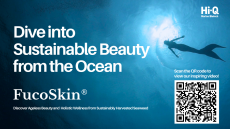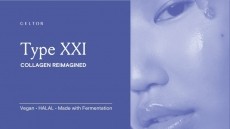Scientists discover secrets of ancient cosmetics formulation
to be nearly 2000 years old, shares the same fundamental
formulation ingredients as modern-day cosmetics products. Tom
Armitage reports.
The face cream container was unearthed at an archaeological dig and its contents were believed to have been used by fashion conscious Roman aristocrats seeking a pale and appealing complexion.
The fact the cosmetic product had not suffered decomposition, and that its contents remained largely intact, has allowed scientists from Bristol University to create a replica using its exact formulation, substituting its ingredients for modern-day fresh alternatives.
The report appearing in today's issue of Nature magazine, claims that scientific analysis on the sealed Roman pot has revealed striking similarities to the formulation ingredients used by modern day cosmetics manufacturers.
Approximately 40 per cent of the product's ingredients, for instance, were starch and animal fat, most likely to have been derived from the carcass of a cow or goat.
Another chemical compound, tin oxide, was also found in the face cream formulation, which is commonly used in cosmetics products as a whitener.
Researchers claim that the presence of the tin oxide compound could be partly explained because Roman formulators mistakenly understood it to be a lead-related compound, a widely used and also highly dangerous ingredient.
But Professor Richard Evershed believes otherwise: "They weren't choosing materials by accident. They probably had years of observation and experimentation, mixing materials together to alter their properties."
It is believed that starch was added to the Roman cream in a bid to reduce the feeling of grease on the skin, something used for the same purpose in modern day cosmetics products - particularly in moisturisers and hand creams.
Using a recipe similar to that used by Roman formulators, researchers synthesised their own version of the cream only to discover that when penetrating the skin, the fat melted to leave a residue with a smooth powdery texture.
The team who analysed the contents of the pot, discovered that the product was a face cream by a process of elimination, after discarding initial suggestions that the product could have been used as toothpaste, or for use in medicinal applications.
According to Francis Grew, co-author of the report, the product was evidently used for beautifying the skin, based on the outcome of the analysis of the tin's ingredient profile and the fact there was an absence of perfume.
The pot, measuring six centimetres in diameter, was unearthed at the site of a Roman temple in Southwark, south London last July and is the only one of its kind ever found with both its lid and contents intact.


























